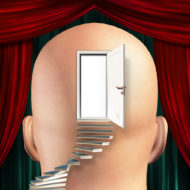
One challenging aspect of Laban’s Mastery of Movement is his description of many dramatic scenes meant to be embodied by the reader. These scenes involve multiple characters, various dramatic conflicts, and several changes in mood on the part of all the characters involved.
Laban wants the reader to get up and mime these scenes, thinking about how the body would be used, where movement would go in the space around the body, and what kind of efforts would appear and change. … Read More









